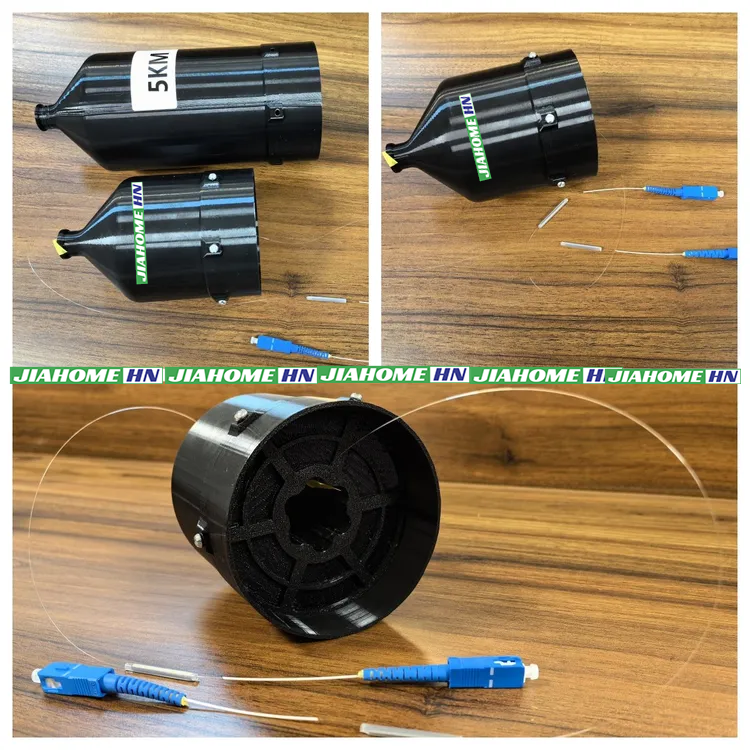Why G.657.A2 Fiber Is a Game-Changer for Drone/UAV Systems
Drones and UAVs (Unmanned Aerial Vehicles) are increasingly relying on fiber optic communication for high-bandwidth, low-latency, and interference-free data transmission. Among fiber types, G.657.A2 stands out as the optimal choice due to its bend resistance, lightweight design, and reliability in dynamic environments. Below, we explore why this fiber is indispensable for modern drone applications.
1. Unmatched Bend Resistance for Tight Spaces
Drones require ultra-flexible cabling to handle rapid maneuvers, winding spools, and tight routing in confined spaces (e.g., landing gear or gimbal mounts).G.657.A2 supports a 7.5 mm bend radius (vs. 30 mm for G.652.D), preventing signal loss when fibers are coiled or bent sharply.
Example: In FPV (First-Person View) drones, 0.26 mm G.657.A2 fibers enable compact spooling without degradation, even at 100 km/h deployment speeds.
2. Lightweight & Low-Loss for Extended Flight Times
Weight is critical for UAVs—every gram affects battery life and payload capacity.
G.657.A2 fibers (e.g., 0.27 mm diameter) weigh ~300g per 3 km, making them ideal for long-range missions without sacrificing agility.
Compared to traditional RF cables, fiber reduces weight by >50% while offering lower attenuation (≤0.21 dB/km @1550 nm).
3. Immunity to Electromagnetic Interference (EMI)
Drones operating near power lines, radars, or electronic warfare systems face severe EMI risks.
Optical fibers (G.657.A2) are immune to EMI, ensuring stable control signals and HD video feeds even in high-noise environments (e.g., military jamming zones).
Example: Military UAVs use G.657.A2 for secure, undetectable communication, unlike RF signals prone to interception.
4. High Bandwidth for Real-Time Data
Modern drones transmit 4K video, LiDAR, and telemetry data simultaneously.
G.657.A2 supports full-band transmission (O/S/C/L bands, 1260–1625 nm), enabling multi-channel CWDM for parallel data streams.
Applications: Swarm drones use fiber to synchronize data across fleets with <1 ms latency.
5. Durability in Harsh Conditions
UAV fibers face vibration, temperature swings, and mechanical stress.
G.657.A2’s robust coating (e.g., PVC/ABS) survives 1000N tensile strength and MIL-STD-810G shock/vibration standards.
Redundancy: Some systems integrate dual G.657.A2 fibers for fail-safe operation (automatic switch if one breaks).
Post time: Aug-06-2025


